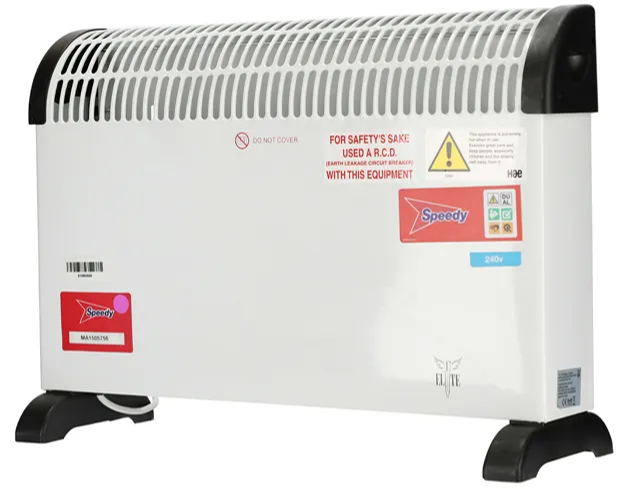
7 Tips To Keep Your House Warm
Heating your home over winter isn’t just important for you to stay comfortable, but also for your home. From frozen pipes to a build-up of damp and mould, the cold weather can play havoc.
But with high gas prices, people are understandably wanting to limit their heating bills. This doesn’t mean your home needs to be cold—from ensuring the heat remains where it needs to, to increasing the amount of heat provided by your central heating, there are ways to heat your home without wasting money.
1. Use temporary heating
If your home is starting to feel cold, but it is still relatively early in the year, you can always use temporary heating to boost the warmth of your rooms.
Ideally, your home should be heated to 18°C. But this doesn’t mean that it has to be your central heating that provides all of this heat.
Keep your central heating system on low (preferably on a timer, so this is regular but controlled) to prevent frozen pipes, but if the heat isn’t reaching you, temporary heating such as an oil-filled heater can offer more targeted warmth without wasting it to the room. You may have heard the phrase "heat the body not the home"; one of these placed near you at night will help you feel the benefits.
On the other hand, a convector heater can provide additional warmth to an entire room, if you want to keep your central heating use to a minimum.
2. Only heat the rooms you need
Nobody in the spare bedroom? Kitchen warm enough due to the oven being on? Are you only in the bathroom for two minutes at a time? It may be pointless heating an entire room if it isn’t used long-term.
If your radiators are fitted with valves, you can turn the heat level off (or very low, if you still want to keep an older central heating system ticking over). This means you’re not paying to use energy which is essentially wasted.
3. Insulate
You may be eligible for free cavity wall or loft insulation – check on the Money Saving Expert website if this applies to you. If not, paying for it could still be worthwhile. It is thought it could save some homes up to £570/year on their energy bills.
The Energy Saving Trust claims cavity wall insulation costs £610 to install on average and can save you between £75 and £255. Loft insulation costs on average £395 and can save between £125 and £315 a year.
Need something more temporary or cost-effective? If you have the uncovered natural floorboards in your home as flooring, you’re probably losing a lot of heat in between the gaps. A large rug, or carpeting the floor, could help here.
You will also lose heat through the gaps in doors and around windows, even if they are relatively new. You can buy an insulation strip which you just cut to size and stick around the edges of the windows and doors which aren’t opened over winter. Weighted fabric draught excluders can also be bought for use below the doors.
4. Check the heat can circulate
Is your sofa in front of the living room radiator? While it may mean your living room is perfectly laid out, it also means the heat isn’t coming into the room. It will just be pushed upwards, so you don’t feel the benefit and any heat the sofa picks up is wasted.
Move everything in your rooms around if needed. Having your sofa or bed next to the radiator is okay, as this way you will feel the benefit. However, don’t block the heat. A radiator cover can help bring the heat out towards the room rather than pushing it upwards if needed, which may be helpful if you have a particularly large or tall room.
5. Get a new boiler
Newer boiler models are more energy efficient and often provide better controls for the user. The ability to set specific water and heat temperatures is just one more modern feature.
New boilers can cost a few hundred pounds, but could easily save you this on your heating bills after a year or two. Plenty of national fitter companies offer payment plans.
6. Draughtproof your home
There is no point in heating your home for it all to escape through gaps in windows and doors.
Professional draught proofing services can cost a few hundred pounds. Think double-gazing windows, sealing around windows and doors, and checking venting. These can be done yourself if you have the time and DIY skills, though.
For a quick fix, draught excluders under doors, draught strips around windows, and closing the door of the room you're in can all help. Check the door to your loft, too--these are often not as tight as they should be.
7. Lag the pipes
Lagging pipes (covering them with foam) can help reduce heat loss, and will also prevent the cold temperatures freezing the pipes. Frozen pipes can result in water bursts, leaks, or no water at all.
It is easy enough to buy the foam and cut it to size. Use wire ties to keep it in place, and replace annually if needed.
READY FOR MORE HOME TIPS?
Thank you for reading our Speedy blog. We hope you found this guide on heating your home efficiently helpful.
We have a range of temporary heating options available for hire for home use and also have a guide on the different kinds of heating available depending on your requirements.
Open a Speedy account online or in-store for all your hire needs.
For more tips subscribe to our YouTube Channel: Speedyserviceshire
Find ideas on Instagram: @speedyhirediy
- 2024
- 2023
- December 2023 (13)
- November 2023 (9)
- October 2023 (7)
- September 2023 (10)
- August 2023 (20)
- July 2023 (21)
- June 2023 (17)
- May 2023 (17)
- April 2023 (17)
- March 2023 (14)
- February 2023 (15)
- January 2023 (7)
- 2022
- December 2022 (6)
- November 2022 (12)
- October 2022 (24)
- September 2022 (14)
- August 2022 (12)
- July 2022 (15)
- June 2022 (18)
- May 2022 (14)
- April 2022 (9)
- March 2022 (5)
- February 2022 (5)
- January 2022 (2)
- 2021
- December 2021 (7)
- November 2021 (10)
- October 2021 (1)
- September 2021 (1)
- August 2021 (3)
- July 2021 (3)
- June 2021 (4)
- May 2021 (1)
- April 2021 (1)
- March 2021 (2)
- February 2021 (1)
- January 2021 (1)
- 2020
- 2019
- 2017
- 2016
- 2014
- 2013
- 2012
- 2011


